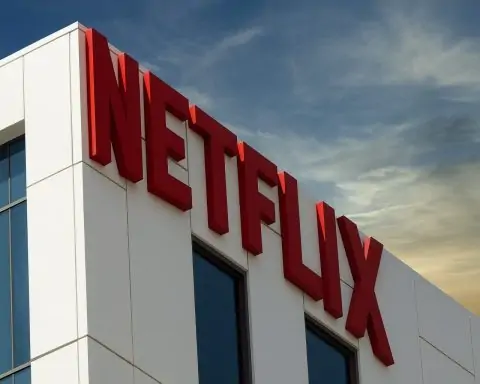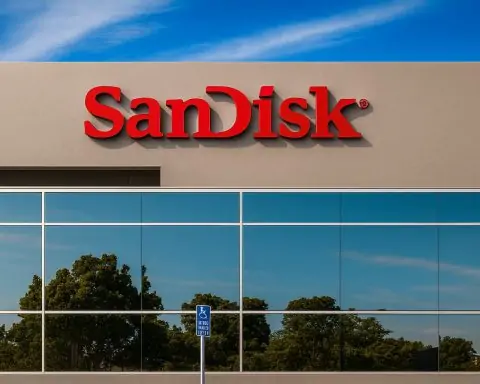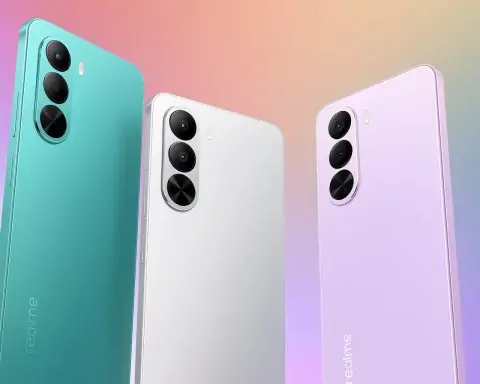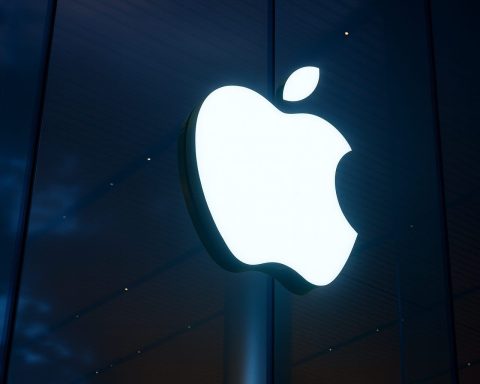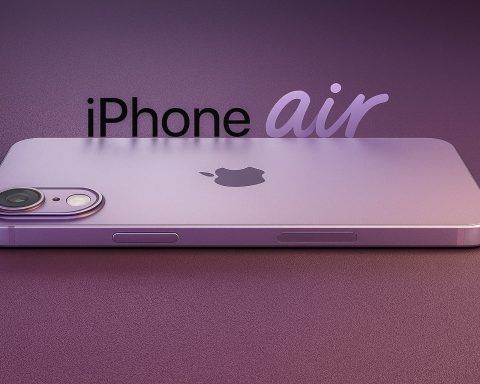- Camera Showdown: Apple’s iPhone 17 Pro Max introduces an 18MP “Center Stage” front camera with a unique square sensor, delivering the widest field of view among the three and exceptional detail for selfies [1]. In low light tests, the iPhone 17 Pro Max’s 48MP main camera captured brighter, cleaner shots than the Galaxy S25 Ultra, retaining more detail with less noise [2].
- Samsung’s Powerhouse Optics: Samsung’s Galaxy S25 Ultra packs a quad-lens setup, led by a 200MP main sensor, plus dual telephoto lenses (3× and 5× optical) that enable up to 100× “Space Zoom” for far-away subjects [3]. Its 50MP ultrawide camera is a big upgrade in detail from last year’s model [4], and Samsung’s camera app offers the most robust pro modes and shooting features of the trio [5].
- Google’s AI Camera King: Google’s Pixel 10 Pro XL sports a 50MP main camera and Google’s best AI-driven image processing. It matches Samsung with a 5× optical telephoto (48MP) and adds clever software tricks like Magic Eraser and Best Take for flawless photos [6]. Its front camera is a whopping 42MP ultrawide unit (103° field of view) for group selfies [7], though reviewers note it can sometimes over-sharpen details and flatten skin tones [8].
- Performance & Software: The iPhone 17 Pro Max’s A19 Pro chip delivers blistering speed – Apple’s silicon remains a step ahead in raw CPU/GPU power [9] – while the Galaxy S25 Ultra’s Snapdragon 8 Gen 3 (branded “8 Elite”) provides top-tier Android performance and graphics. The Pixel 10 Pro XL’s custom Tensor G5 chip lags in sheer speed but enables advanced on-device AI (e.g. live call translation, AI photo editing), aligning with Google’s software-first approach [10]. All three phones run silky-smooth 120Hz LTPO displays and fluid software (iOS 26 on iPhone, One UI 6/Android on Samsung, and stock Android 16 on Pixel).
- Battery & Features: Each phone easily lasts a full day: the iPhone 17 Pro Max’s efficient design delivers “all-day battery life and then some” in testing [11], while the Galaxy S25 Ultra’s big battery (~5000 mAh) and the Pixel 10 Pro XL (~4870 mAh) are comparable in endurance. Apple finally upgraded charging to 40W fast-charge (50% in ~20 min) [12], nearly on par with Samsung’s 45W and ahead of Google’s ~30W. The iPhone and Pixel support the new Qi2 wireless charging at 25W [13]. Notably, the Galaxy S25 Ultra is the only one with a built-in S Pen stylus for note-taking and creative tasks – a unique productivity perk in this trio.
Design & Display
Each of these flagship phones is built to impress, with premium materials and huge, vibrant screens. Apple’s iPhone 17 Pro Max introduces a durable heat-forged aluminum unibody design [14], giving it a sleek yet sturdy frame. It’s slightly more compact than the Ultra in width thanks to a 6.7-inch display with slim bezels and the familiar Dynamic Island cutout for Face ID. The Galaxy S25 Ultra, meanwhile, carries on Samsung’s bold design language – a 6.8-inch nearly bezel-free display with a centered punch-hole camera, armored aluminum frame, and subtle curvature at the edges. Despite housing an S Pen, the S25 Ultra remains slim and boxy, with a distinctive camera array on the back (now featuring a new two-tone layout, according to early renders [15]). Google’s Pixel 10 Pro XL embraces a clean aesthetic: it sports a 6.7-inch OLED with a flat design and a slightly thicker top bezel accommodating its ultrawide selfie camera. The Pixel’s back has Google’s signature horizontal camera bar, which now blends more seamlessly into the frame. All three phones boast OLED displays with QHD-ish resolutions and dynamic 120Hz refresh rates, so scrolling and animations feel ultra-smooth. Apple pushed peak brightness to a stunning 3,000 nits on the iPhone 17 Pro Max for superb outdoor visibility [16], while Samsung isn’t far behind with around 2,500+ nits on the S25 Ultra (Samsung tends to lead in display tech, so expect excellent brightness and color). The Pixel 10 Pro XL’s display is much improved as well – Google calls it a “Super Actua” display, and it now rivals the color accuracy and brightness of its competitors. In essence, you’re getting big, beautiful screens on all three: the differences come down to aesthetic preference (e.g. iPhone’s rounded corners vs. Samsung’s more squared look) and little touches like the iPhone’s Ceramic Shield glass or Samsung’s Gorilla Glass Victus protection.
When it comes to biometrics and buttons, there’s a philosophical split: the iPhone relies on Face ID only, with no fingerprint scanner, whereas the Galaxy S25 Ultra and Pixel 10 Pro XL each use an in-display fingerprint sensor (ultrasonic on the Samsung, optical on the Pixel) alongside face unlock options. All three are IP68 water-resistant, so they can handle spills or a dunk, and none has a headphone jack (no surprise in 2025). The Galaxy S25 Ultra’s built-in S Pen stylus is a major differentiator – it slides into the phone’s bottom and lets you jot notes, sketch, or remotely control the camera. Neither Apple nor Google offers a built-in stylus support on these phones (Apple’s Pencil remains iPad-only). If you value having a pen in your phone, Samsung stands alone here. Overall, design and display won’t be deal-breakers – each device looks and feels every bit a premium flagship, with top-notch build quality and stunning visuals. It’s in the camera department that we see more dramatic differences in approach and results.
Camera Systems: Triple Threat Comparison
Camera prowess is the headline feature for all three phones – and each takes a slightly different approach to earn the “camera king” crown. Here’s a breakdown of their rear camera hardware:
- iPhone 17 Pro Max: Triple 48MP sensors (co-engineered with Apple’s Fusion technology). A 48MP main wide camera (24mm, ƒ/1.78) with sensor-shift stabilization, a 48MP ultrawide (13mm, ƒ/2.2, 120° FoV) for expansive shots, and a new 48MP telephoto that offers 4× optical zoom (100mm, ƒ/2.8) [17]. Apple actually uses the high resolution to enable an “optical-quality” 2× zoom from the main camera and even an 8× zoom from the telephoto by cropping in [18] – giving a total 16× zoom range. On paper, the iPhone’s zoom tops out at 8× optical (12MP quality) or 40× digital [19], which is lower than the Samsung’s extreme reach, but Apple’s focus is on maintaining quality at typical zoom levels. All three rear lenses are 48MP, a first for Apple, aimed at consistency in color and detail across zoom steps [20].
- Samsung Galaxy S25 Ultra: Quad-lens system. It retains a 200MP main wide camera (Samsung’s ISOCELL HP2 sensor, ƒ/1.7) – binning down for 12MP or 50MP shots with excellent detail [21]. The ultrawide camera jumps to 50MP this year (up from 12MP prior) [22], offering sharper ultrawide photos and improved low-light gathering (the sensor size nearly doubled). Uniquely, Samsung includes two telephoto cameras: a 3× telephoto at 12MP (for mid-range zoom) and a periscope 5× telephoto now upgraded to a 50MP sensor [23]. This change means the S25 Ultra can crop into that 50MP periscope to achieve up to ~10× optical-quality zoom and an insane 100× digital zoom for moonshots or distant subjects [24]. No other phone matches this zoom versatility. The trade-off is that beyond 10× zoom, quality degrades, but it’s a fun feature for bragging rights. Samsung’s camera app also offers Pro mode, RAW capture, and a slew of shooting options – it’s “the most robust suite of tools” for photography enthusiasts [25], giving the S25 Ultra an edge in flexibility.
- Google Pixel 10 Pro XL: Triple-lens system. Google sticks with a tried-and-true 50MP main sensor (Octa-PD technology, ƒ/1.68) and pairs it with a 48MP ultrawide (ƒ/1.7, 123° FoV) that supports autofocus for macro shots [26] [27]. The telephoto is also 48MP with 5× optical zoom (≈120mm, ƒ/2.8) and Google’s “Pro Res Zoom” up to 100× digital [28] [29]. In essence, the Pixel 10 Pro XL’s camera specs closely mirror Samsung’s zoom capabilities (5× optical, 100× digital), though with one less telephoto lens – Google relies on its Super Res Zoom algorithms to fill the gap between 1× and 5×. Historically, Pixel phones excel through computational photography: things like HDR+ bracketing, Night Sight astrophotography, and Google’s excellent image tuning. The Pixel 10 Pro XL continues that tradition, and it has some unique tricks (e.g. Magic Editor to reposition subjects and Best Take which blends group photos so everyone looks their best) [30] [31]. These AI features can “reimagine” your photos in ways Apple and Samsung don’t natively match.
Camera Performance: Apple’s Balance vs Google’s Computation vs Samsung’s Versatility
In real-world shooting, all three flagships produce stellar images, but there are subtle differences in color science and low-light ability. Apple’s iPhone 17 Pro Max has emerged as a benchmark for consistency. In a 200-photo face-off, the previous-gen iPhone 16 Pro Max narrowly beat the Galaxy S24 Ultra, and Apple’s aim with the 17 Pro Max was to widen that gap [32] [33]. According to Tom’s Guide, the iPhone 17 Pro Max continues to deliver exceptionally balanced photos: colors are vivid but more accurate compared to Samsung’s tendency to oversaturate [34] [35]. For instance, in one test shot of colorful produce, both phones made colors pop, but “the iPhone 17 offers a much more balanced color profile” – green peppers were better exposed, whereas on the Galaxy S25 the red peppers blew out and blended together [36] [37]. The iPhone’s 48MP sensor and Apple’s image processing also excel in dynamic range. One reviewer noted that the iPhone captured shadow detail (like the dark areas under a tree) noticeably better than the Galaxy, yielding a more nuanced image [38]. In challenging low-light scenes, Apple’s tuning really shines: despite no new hardware on the main camera, the 17 Pro Max “delivers outstanding performance under low-light situations that put its rivals to shame,” exposing scenes more brightly and cleanly than the S25 Ultra [39] [40]. That said, Samsung has improved its night mode too – the S25 Ultra shows “marked improvement over the Galaxy S24” with cleaner night shots [41] [42]. But if we’re nitpicking, iPhone still tends to nail the overall exposure and color balance in dark conditions slightly better, avoiding the overly bright or overly warm casts that can sometimes affect Samsung’s night photos.
Samsung Galaxy S25 Ultra, for its part, delivers incredible versatility. Having both 3× and 5× optical lenses means you get tack-sharp results across a variety of zoom ranges – portraits at 3× look fantastic, and at 10× the S25 Ultra can capture details (say, text on a distant sign or the moon’s craters) that the iPhone and Pixel simply cannot resolve optically. In Tom’s Guide’s testing, the S25 Ultra was a top performer and was only edged out by the iPhone in a very close competition [43]. Samsung’s image style typically amps up saturation and contrast – which many users love because it makes photos “pop” on those gorgeous screens. Both the iPhone and Pixel tend to pursue a more natural look. Pixel 10 Pro XL, in fact, often goes for a subdued aesthetic: its photos may look less punchy side-by-side, but they reflect realistic color tones (Google’s Real Tone system is designed to accurately represent diverse skin tones). Some reviewers have observed that Pixel images can sometimes appear too flat or pale in certain lighting, lacking the vivid warmth that an iPhone might apply [44]. Interestingly, John Velasco at Tom’s Guide criticized the Pixel 10 Pro XL’s tendency to “make me look devoid of color” in selfies [45], which suggests Google dialed back saturation perhaps a tad too far in some cases.
When it comes to detail and sharpness, all three phones leverage their high-megapixel sensors by pixel-binning and multi-frame processing. Daylight shots from any of these cameras are incredibly detailed. If you pixel-peep, Samsung’s 200MP (binned to 12MP by default) can capture the finest textures – but Apple’s 24MP output from its 48MP sensor actually held its own or even surpassed Samsung in some scenes. One comparison noted the iPhone made textural details (like the pattern on a shirt) look “way sharper” than the Galaxy did [46] [47], despite the latter’s hardware advantage, indicating Apple’s sharpening processing is very adept. On the flip side, the Pixel 10 Pro XL, with its 50MP main shooter, sometimes over-sharpens by software, which can create a slightly artificial look on close inspection [48] [49]. Google’s algorithms aggressively try to enhance detail, occasionally at the expense of introducing a bit of noise or haloes. This is usually only noticeable when zooming in; otherwise Pixel photos look crisp and balanced.
In terms of ultrawide cameras, Apple’s decision to use a 48MP sensor gives it an edge in clarity. Digital Trends found the iPhone 17’s ultrawide “consistently proven to be better” than the Pixel 10’s 13MP and Galaxy S25’s old 12MP sensors [50]. Now that Samsung upgraded to 50MP ultrawide, that playing field is more level. Expect the S25 Ultra’s ultrawide to produce much sharper images than its predecessor – and likely very comparable to the iPhone’s in daylight. The Pixel’s 48MP ultrawide is also excellent, plus it has autofocus to double as a macro lens. All three manage distortion well and can capture dramatic wide vistas or tight indoor spaces with ease.
Zoom and Telephoto: How Far Can You Go?
Zoom capability is a defining difference. Samsung clearly leads in pure reach – its combo of 3× and 5× lenses, plus high-res sensors, means you can get usable 10× shots optically and push up to 30× or even 50× with surprisingly decent results if conditions are good. Anything beyond that (toward 100×) is more of a party trick, best for viewing but not printing. Still, it’s Samsung’s hallmark feature and fun to experiment with. The iPhone 17 Pro Max, by contrast, maxes out at 4× optical (8× with a quality crop). Apple actually reduced the optical zoom from last year’s 5× on the 16 Pro Max to 4× on the 17 Pro/Max, but did so to incorporate a much larger 48MP sensor for the telephoto [51] [52]. The result? At 4×, the iPhone delivers a super sharp image (better than last year’s 5× lens did at 5×), and Apple argues you can simply crop in further thanks to those extra pixels. Indeed, at 8× zoom (which is a digital crop of the 4× lens), John Velasco found the iPhone 17 Pro’s shots were about on par with the 16 Pro’s 5× optical shots [53] [54]. In short, Apple sacrificed some zoom range for improved quality at medium zoom – a trade-off that will suit most people who don’t often shoot beyond 10×. Google’s Pixel 10 Pro XL sits in between: its 5× periscope offers a nice middle ground, and Google’s Super Res Zoom can yield surprisingly good 10×-15× shots. In many blind tests, Pixel phones have punched above their hardware weight in zoom thanks to image fusion techniques. For example, at 10× the Pixel might not be quite as detailed as Samsung’s native 10×, but it comes closer than you’d expect. However, there’s no denying physics – at extreme zoom (20×, 30× and beyond) the Galaxy S25 Ultra produces a more legible result. One Tom’s Guide face-off explicitly noted Samsung’s advantage here, saying the S25’s quadruple-lens system is “formidable” and gives Samsung an edge in telephoto flexibility over Apple [55] [56].
It’s worth noting that Apple and Google both rely heavily on computational enhancements for zoom. Apple’s Photonic Engine and Google’s Super Res algorithms each try to upscale and fill in detail. Samsung also uses AI upscaling at the far end of its zoom. The playing field up to 5× is pretty level in quality; past that, the iPhone taps out, the Pixel can stretch to maybe 15× with okay results, and the Samsung can go the farthest (30× often being the practical limit for a decent shot). If you care about wildlife photography or spying distant subjects, Samsung is the clear choice. But for everyday zoom (2–8× range), all three do an excellent job. Apple’s 2× lossless zoom (using the center of the 48MP sensor) is particularly handy for portraits without needing a fourth lens [57] [58].
Front Cameras & Selfies
Apple made a bold move this year by upgrading its front camera in a big way, and it’s paying off. The iPhone 17 Pro Max’s 18MP “Center Stage” front camera is not just higher resolution than the old 12MP TrueDepth camera – it’s also a square sensor that lets you capture in wide, ultrawide, or cropped modes without rotating the phone [59] [60]. In practice, this means whether you hold the iPhone vertically or horizontally, you can get the same framing options and quality. John Velasco explains that you no longer have to think about turning the phone for a wider group selfie – “snap your selfies right away and still get the perfect shots”, because the sensor can capture a wider field and you choose the crop later [61]. What’s more, Apple used the same 18MP Center Stage camera across all iPhone 17 models, even the cheaper ones [62]. So the Pro Max doesn’t have an advantage over the regular iPhone 17 in selfie quality – they’re identical, and they’re excellent. In Tom’s Guide’s direct comparison, the iPhone 17 Pro Max’s selfies impressed with detail and balanced exposure. Its only quirk was a tendency to oversaturate skin tones a bit, giving a slight over-tanned look [63] [64]. This was noted in side-by-side shots against Samsung, where the iPhone made the subject’s shirt look sharper, but the skin a tad too warm. Overall, though, Apple’s new front camera “sets the bar” according to Tom’s Guide: it offers the widest native field of view of the three (aside from using special tricks on foldables) and doesn’t sacrifice detail or dynamic range in the process [65] [66]. In fact, Digital Trends’ reviewer gushed, “I absolutely love the Center Stage Selfie camera on all four new iPhones, and it’s a feature that I hope every phone maker copies.” [67] Such high praise underlines how Apple nailed the selfie game – group shots, 4K selfie video, and even an auto-framing feature for video calls (Center Stage will follow you during FaceTime or Zoom) make the iPhone a front-camera champ.
On the Galaxy S25 Ultra, the front camera hardware actually didn’t change from the previous generation: it’s a 12MP sensor (Samsung’s Dual Pixel autofocus selfie cam). While that sounds modest next to Apple’s 18MP and Google’s 42MP, Samsung’s selfie camera has been quite good in recent years. It offers two framing options – a slightly zoomed crop for single-person selfies and a wide mode for group selfies. In comparisons, the S25 Ultra’s front cam produces wider shots than the iPhone by default [68] [69], fitting more background or friends in. Detail is solid thanks to autofocus and reasonable pixel size, though it can’t match the sheer resolving power of the iPhone or Pixel sensors. Samsung tends to amp up vibrance; this can make skin tones look warmer or more tanned, as noted earlier [70]. Some users might prefer that “sunny” look, others might find it less natural. The Galaxy’s advantage is in consistency and features – it has a very good portrait selfie mode and lots of beauty adjustments if you want them. But in a head-to-head, it’s clear Samsung has fallen behind on front camera specs. In fact, there’s talk that even the next-gen Galaxy S26 will stick to the same 12MP selfie camera due to technical constraints [71]. So for now, Samsung is leaning on software tweaks rather than raw hardware up front.
Google took a completely different approach with the Pixel 10 Pro XL’s selfie camera: they went for sheer resolution. The Pixel’s 42MP front-facing camera (ƒ/2.2) is by far the highest resolution selfie shooter on any mainstream phone [72]. It also has a very wide 103° field of view, which is fantastic for group selfies or fitting scenery in your selfie. By default, it likely bins pixels (perhaps to around 10MP output) for better light sensitivity. In well-lit shots, the Pixel’s selfies are extremely detailed – you can zoom in and see textures in hair and clothing that a lower-res camera might miss. And thanks to Google’s image processing, it handles tricky lighting well, avoiding blown highlights in backgrounds. However, there have been mixed reactions to its color and tone. As mentioned, one expert found the Pixel’s color science made his face look a bit lifeless [73] – Google seems to err on the side of cooler, neutral tones. The Pixel’s post-processing also applies strong sharpening; sometimes this helps, but it can accentuate pores or blemishes more than some would like. The upside is that if you prefer a softer look, the Pixel’s camera app has an “Face Unblur” and other AI tools that can adjust things. And speaking of AI, the Pixel’s “Real Tone” is designed to accurately render diverse skin tones, a point of pride for Google, so it may do better with certain complexions. Overall, the Pixel’s selfie cam is a technical powerhouse, but its output can be a matter of personal taste – you might love the ultra-detailed look or you might find it a bit unforgiving compared to the slightly more flattering (if saturated) Apple/Samsung rendering.
For video, it’s worth noting all three front cameras can record 4K video now. Apple leads with 4K60 Dolby Vision HDR on the selfie cam [74] [75], which is stunning for vloggers. Samsung does 4K60 (HDR10+ on rear, but front might be SDR), and Pixel can do at least 4K30 on the front (Google typically caps front video at 30fps). Stabilization is excellent on all – Apple even advertises an “ultra-stabilized” selfie video mode [76]. So for TikTok, Instagram Stories, or video calls, any of these will serve you well, with Apple having a slight edge in dynamic range for backlit scenes.
Performance and Software
Under the hood, these phones use very different chips, but any of them will feel extremely fast for daily use. The iPhone 17 Pro Max’s A19 Pro chip is Apple’s latest custom silicon built on a 3nm process. It’s an evolution of the already blazing A18, bringing even higher clock speeds and a new 6-core GPU with hardware ray tracing [77] [78]. In practical terms, the A19 Pro handles everything you throw at it without breaking a sweat – from graphically intense games to 4K video editing. iPhones have historically outperformed Android devices in CPU benchmarks, and that trend continues; the A19’s single-core performance is class-leading, and its efficiency cores help preserve battery life during routine tasks. Where Apple also excels is the Neural Engine – 16-core in A19 [79] – used for on-device AI and machine learning tasks (like Live Text, Siri processing, image processing for Photonic Engine). That said, Google is closing the gap on the AI front with its own silicon.
The Google Pixel 10 Pro XL runs on Google’s Tensor G5 chip. This is the third generation of Google’s in-house SoC for Pixels. Instead of aiming for the absolute fastest CPU/GPU, Google designed Tensor G5 to prioritize AI capabilities and efficient ML processing. It enables features like the “Gemini” AI model integration [80] [81] – for example, complex text-to-image editing in Google Photos (“Ask Photos” to edit an image), real-time voice translation during calls, and the Magic Eraser/Unblur functions, all done on-device. In everyday use, the Pixel 10 Pro XL is smooth: the UI is stock Android with Google’s Material You theming, and the 120Hz display makes interactions fluid. The Tensor G5’s CPU is competent (multi-core performance is good, though single-core lags behind Apple and Qualcomm’s latest), and the GPU can handle 3D games, though not always at the very highest settings. If you’re a mobile gamer who craves the absolute top frame rates, the Snapdragon or A19 might pull ahead slightly. But the difference is rarely noticeable outside of benchmarks. The Pixel’s real advantage is software: being a Google phone, it gets Android updates first (and the Pixel 10 comes with a promise of long software support, likely 5 years of updates). Plus, it has exclusive Pixel-only features – call screening, the Recorder app with live transcription, etc. Android 16 on the Pixel is bloat-free and polished, which appeals to those who want a clean experience.
The Samsung Galaxy S25 Ultra uses the latest Qualcomm Snapdragon chip – likely branded Snapdragon 8 Gen 3 or “8 Gen 3 for Galaxy” (some leaks call it the Snapdragon 8 Elite chip) [82]. This is also a 3nm chipset with an 8-core CPU (featuring one prime core, five performance cores, and two efficiency cores, if Qualcomm’s typical layout holds). Performance-wise, it’s a beast: it closes the gap with Apple in many areas, and the Galaxy S25 Ultra feels incredibly responsive. Apps launch quickly, multitasking through Samsung’s DeX or split-screen modes is effortless, and heavy games run at excellent frame rates. One area Qualcomm often leads is in GPU – the Adreno GPUs tend to excel at sustained performance, meaning the S25 Ultra is an excellent choice for extended gaming sessions or GPU-intensive tasks. Samsung pairs this with generous RAM (likely 12GB or more on the Ultra) which helps with keeping apps open in the background. On the software side, the S25 Ultra runs Samsung’s One UI 6 (on Android 14 or 15 at launch, upgradable beyond). One UI is feature-rich: you get Samsung’s ecosystem apps, theming options, Samsung DeX (desktop mode), and a lot of customization. It’s not as minimal as Google’s software, but it is very user-friendly and optimized for the large screen (one-handed modes, etc.). Samsung also matches Google’s update promise nowadays, offering up to 4–5 years of updates. One UI integrates a ton of AI features as well – Samsung has been adding on-device AI for enhancements like scene optimization in camera, voice assistants, and text recognition. While not as trumpeted as Google’s Gemini AI, Samsung’s approach is more about incremental improvements across the system (and some features hook into Microsoft’s and Google’s services).
In summary, raw performance: iPhone’s A19 is likely the fastest CPU core, Samsung’s Snapdragon is a close second and possibly ahead in graphics, Pixel’s Tensor is the slowest of the three but still more than sufficient. In real life, you won’t see much difference in speed for common tasks. Instead, consider the ecosystem and features: iOS 26 on the iPhone brings things like FaceTime, iMessage, tight integration with Mac/Apple Watch, and the new Apple Intelligence features (some AI photo effects, Live Voicemail transcription, etc.). One downside noted in iOS 26 was that Apple didn’t add as many new AI tricks as some hoped [83] – for example, Apple’s on-device AI is mostly behind-the-scenes, not user-facing like Google’s. By contrast, the Pixel puts AI front and center in the user experience (you can literally ask your phone to summarize a webpage or fix your grammar in an email using its AI). The Galaxy falls somewhere in between: it has a mix of Samsung’s own apps and Google’s, and you can of course use Google Assistant, Bixby (if you dare), and a variety of features like Samsung’s Knox security and DeX that appeal to power users.
A quick word on thermal and battery performance under load: The iPhone’s vapor-cooled design keeps the A19 Pro running efficiently [84]. Apple’s chips are known for sustained performance without heavy throttling. The Snapdragon 8 Gen 3 in the S25 Ultra is likely quite power-hungry under max load (previous Galaxy chips could get warm), but Samsung’s large chassis and cooling should manage heat well for typical use. The Tensor G5 has historically run a bit warmer than others (Pixel 8/7 got critiques for heating); hopefully G5 improved that, but it’s something to watch – intensive camera or AI use might make the Pixel warm to the touch faster. None of these phones have active cooling or anything exotic, so extended gaming will drain battery and produce heat on all three – just perhaps a bit slower on the iPhone due to efficiency.
Battery Life & Charging
All three phones come with big batteries and support fast charging, but there are some key differences. Apple iPhone 17 Pro Max doesn’t advertise a battery capacity (teardowns put it roughly around 4,500–4,800 mAh, though Apple’s optimizations make it punch above its weight). In Apple’s own tests, the 17 Pro Max can achieve up to 39 hours of continuous video playback on a charge [85] [86], which is slightly better than the 16 Pro Max and among the best in class. Reviewers note that the iPhone 17 series delivers “outstanding battery life”, often lasting a full day and then some into the next morning [87] [88]. The A19 chip’s efficiency and iOS’s power management mean standby drain is minimal. So, if you’re not a heavy user, you might get 1.5 to 2 days between charges on the Pro Max.
The Galaxy S25 Ultra likely sports a ~5000 mAh battery (Samsung used 5000 mAh in S21–S24 Ultra, and it’s expected here too). With One UI optimizations and the new Snapdragon’s efficiency gains, the S25 Ultra also comfortably lasts all day. Historically, Galaxy Ultras have had slightly shorter battery life than equivalent iPhones – perhaps due to always-on display and more background services – but the gap has narrowed. You can expect the S25 Ultra to handle a day of moderate use (think 5-6 hours of screen time) with some buffer. Additionally, Samsung offers battery saving modes and even an “Light” performance profile in settings for extending life further if needed. The Pixel 10 Pro XL’s battery is around 4870 mAh (typical) for the smaller Pro, and likely just over 5,000 mAh for the XL model [89] [90]. Google claims “24+ hour battery life” and up to 72 hours with Extreme Battery Saver [91]. In practice, Pixels have been decent but not chart-toppers for endurance; the Tensor chip’s efficiency isn’t as refined, so the Pixel 10 might end the day with a bit less charge left than the iPhone or Samsung if all are used equally. However, many Pixel users easily get a full day and appreciate features like Adaptive Battery (which learns your usage patterns to stretch life when needed). Plus, that Extreme Battery Saver can push it into multi-day territory by throttling down background activity aggressively – useful for emergencies or camping trips.
When it’s time to charge, Apple finally stepped up in the charging department. The iPhone 17 Pro Max supports up to 40W wired fast charging, though you have to buy a 40W (or higher) USB-C power adapter separately [92] [93]. With the right charger, Apple says you can hit 50% in about 20 minutes [94] – a huge improvement over the old 20W iPhones. It also supports up to 30W via the MagSafe wireless charger (Qi2 standard) for 50% in 30 minutes [95] [96]. In real terms, the iPhone still isn’t as fast as some Chinese Android phones (with 65W+ charging), but it’s now on par with Google and not far off Samsung. The Galaxy S25 Ultra supports 45W wired charging (assuming same as S24 Ultra). That can refill roughly 50-60% in half an hour. Samsung didn’t increase charging speeds this generation, focusing instead on battery longevity and safety. One advantage Samsung has is 15W wireless charging (Qi/PMA) and Wireless PowerShare – you can reverse wireless charge earbuds or another phone on the back of the S25 Ultra. The Pixel 10 Pro XL supports around 30W wired charging (Google often states “about 50% in ~30 minutes” with their 30W charger). It also supports wireless charging up to 23W on a Pixel Stand and now adopts Qi2 for broader 15W wireless compatibility [97]. Pixel also has Battery Share (reverse wireless charging) like Samsung, to juice up accessories.
It’s interesting that both the iPhone 17 Pro Max and Pixel 10 Pro XL have embraced the new Qi2 wireless charging standard [98], which is essentially the universal version of Apple’s MagSafe (magnetic alignment for optimal charging). This means you can use magnetic wireless chargers interchangeably on those two – a nice bit of cross-platform convenience. Samsung’s S25 Ultra doesn’t explicitly say Qi2, but it can charge on any Qi pad (just without magnets snapping it in place).
In everyday terms: none of these phones will leave you stranded for battery if you top up each night. The iPhone might give you a tad more cushion into the next day. The Samsung and Pixel are very similar in capacity; heavy users (screen on 7-8 hours, lots of 5G, GPS, etc.) might drain them by evening. The good news is all charge much faster than older models. It’s a relief that Apple users no longer have to wait nearly 2 hours for a full charge – the gap between ecosystems in charging speed has effectively closed for mainstream use. Just keep in mind, only Samsung includes a stylus which also draws a tiny bit of battery when in use (but it’s negligible). And as always, things like 5G usage, screen brightness, and background apps (looking at you, Pixel’s constant feature drops) can affect battery life.
Additional Features and Differentiators
Beyond the core specs, each phone has some extras worth considering:
- Operating System & Updates: The iPhone 17 Pro Max runs iOS 26, which introduces a fresh look and some new tricks (like interactive widgets and enhanced Apple Intelligence features). Apple’s ecosystem integration is a selling point – if you use AirPods, a Mac, or an Apple Watch, the seamless connectivity (Handoff, iCloud, etc.) is unbeatable. Apple also typically supports iPhones for 5+ years of iOS updates, meaning this phone could easily be updated into 2030. The Galaxy S25 Ultra runs Android with Samsung’s One UI, which is very feature-rich. It comes with Samsung’s services and some duplicate apps (Samsung Internet, Messages, etc., though you can also use Google’s). One UI is highly customizable and now even supports DeX, which lets you connect the phone to a monitor/TV and use a desktop-like interface – great for productivity. Samsung promises at least 4 major Android version updates and 5 years of security patches, which is excellent in the Android realm. The Pixel 10 Pro XL runs Android 16 (clean, Google’s vision of Android) and will get Android updates day-one for about 5 years too. Pixel’s UI is minimal but packed with intelligence – e.g., automated call screening, “Hold for Me” (where Google Assistant waits on hold in calls), and the new Gemini AI features that are exclusive to Pixel (per Google’s claims of “most advanced on-device AI yet” [99]). Choosing between these comes down to personal preference: iOS is smooth and simple but less customizable; One UI is feature-packed but can be a bit overwhelming with options; Pixel’s Android is clean and smart, but less visually flashy.
- Storage Options: Apple offers the iPhone 17 Pro Max in 256GB base, with options up to 1TB. Samsung’s S25 Ultra usually starts at 256GB as well (with higher tiers and sometimes a 1TB model, often with extra RAM). Google’s Pixel 10 Pro XL likely comes in 128GB (base) and 256GB, maybe 512GB for the XL. None have microSD card slots (Samsung used to, but not in recent Ultras). So if you need a ton of local storage (e.g. for 4K ProRes videos or huge photo libraries), the iPhone’s 1TB option or Samsung’s top model might sway you.
- Audio and Haptics: iPhones are known for very good stereo speakers and excellent haptic feedback. The 17 Pro Max continues that, providing loud, balanced stereo sound and the Taptic Engine for subtle vibrations. The Galaxy S25 Ultra also has strong stereo speakers (typically tuned by AKG) and good haptics (though many argue Apple’s are still a bit superior in precision). The Pixel 10 Pro XL has decent stereo speakers, but Pixels historically have had the weakest speakers of the three – acceptable, but not as rich or loud as the iPhone/Galaxy in some tests. Haptic feedback on the Pixel is solid and much improved over earlier Pixels, but perhaps a notch below the very best from Apple. All three have Bluetooth 5/LE Audio support for wireless earbuds, and none have a headphone jack, as mentioned.
- Unique Perks: The Galaxy S25 Ultra stands out for its S Pen (drawing, air gestures, remote camera shutter control), its advanced camera app (Pro Video mode, 8K video recording at up to 30fps, Director’s View which uses multiple cameras at once), and broad compatibility (Samsung Pay with MST for legacy terminals, if still present, and generally wide support for accessories). The Pixel 10 Pro XL shines in AI-driven perks: its Recorder app can transcribe meetings in real time, its Call Assist features are a godsend for spam calls, and it has exclusive features like Call Screen and Assistant voice typing that make daily tasks easier. Pixel also gives you some Google One perks (like VPN by Google One at no extra cost, as listed in specs [100]). The iPhone 17 Pro Max offers things like MagSafe accessories (magnetic cases, wallets, mounts), an array of creative tools like iMovie/Clips, and now Dual Capture video (recording from front and back cameras simultaneously [101] [102], a feature Samsung had and Apple now introduced in iOS 26). Apple also has the Vision Pro coming, and the 17 Pro Max can capture Spatial Videos for that headset [103] [104] – something niche, but worth noting if you’re an early adopter.
Security and privacy are priorities across the board: Apple has its strong privacy stance and on-device processing, Google has Titan M2 security chip and regularly updates Pixels with new security features, Samsung offers Knox security and Secure Folder for keeping data safe. So you’re covered whichever you choose – none has a glaring weakness in this department.
Verdict: Which Flagship Should You Choose?
In this battle of ultra-phones, there is no outright “loser” – each is a top-tier device, but they excel in different areas:
- Camera Winner – Apple iPhone 17 Pro Max: All things considered, Apple’s latest edges ahead for the best overall camera experience. The iPhone’s photos are wonderfully balanced, its low-light performance is second to none, and that new Center Stage selfie camera is a game-changer for avid selfie takers [105]. As one expert concluded, “if you want the best overall camera experience, then the iPhone 17 is the stronger contender.” [106] [107] It may not zoom as far as the Galaxy, but for most people the image quality and reliability at 0.5× to 8× zoom – and in video – make the iPhone 17 Pro Max the camera to beat in 2025. You also get the fastest performance and an ecosystem that’s great for long-term value (with software updates and resale value). The drawbacks? A very high price and less built-in flexibility (no expandable storage or stylus support, and iOS is more “walled garden”). If you’re deep into Apple’s ecosystem or prioritize having the best camera in a phone that just works, the iPhone 17 Pro Max is easy to recommend.
- Zoom and Feature Champion – Samsung Galaxy S25 Ultra: Samsung’s flagship is the ultimate all-rounder and the best choice for power users and photographers who want versatility. With the S25 Ultra, you can do things no iPhone or Pixel can: zoom up to 100×, use an integrated stylus, record 8K video, or run a desktop interface from your phone. It has excellent cameras in its own right – in fact, it was only narrowly behind the iPhone in many camera tests [108], and some may even prefer Samsung’s punchier look. If you love tweaking settings or need that long zoom for wildlife or sports, the Galaxy won’t disappoint. It’s also an absolute beast in performance and has a gorgeous display, plus features like reverse wireless charging and tons of customization. The trade-offs are a slightly less refined software experience (One UI has ads in some apps and duplicate services you might not use) and possibly shorter battery life by a hair. Also, the Galaxy is as expensive as the iPhone in top configurations. But if you want the most features and flexibility in one device – and especially if you’re an Android user already – the Galaxy S25 Ultra is the king of that hill.
- AI and Value Proposition – Google Pixel 10 Pro XL: Google’s contender is the smart choice for those who prioritize software intelligence and a clean user experience over raw specs. The Pixel 10 Pro XL still offers a phenomenal camera system – its photos have a natural look and Google’s HDR and Night Sight are nearly magic. It might not win in a spec sheet fight, but it often produces shots that are just as pleasing as the other two, save for some subjective differences in tone. Moreover, the Pixel brings fun and useful AI features that genuinely change how you use your phone day-to-day (e.g., letting the Assistant handle annoying calls or magically erasing strangers from your photos with a tap). It’s also likely the best bang for your buck: Pixels are usually priced a bit lower than iPhones and Galaxy Ultras. If the Pixel 10 Pro XL undercuts the others by a couple of hundred dollars, it’s a huge point in its favor, since you’re getting 90% of the capability at a better price. The downsides: the Tensor G5 chip, while competent, isn’t as future-proof in performance; heavy 3D gamers might prefer the other phones. And while Google’s build quality has improved, the iPhone and Samsung feel just a touch more premium in hand (with Apple’s metal frame and Samsung’s polished design). Also, Google’s availability and support network isn’t as wide as Apple’s or Samsung’s globally. But if you want a phone that’s smart, user-friendly, and a bit easier on the wallet, the Pixel 10 Pro XL is extremely attractive – and it will get you Google’s latest innovations first.
Bottom Line: You truly can’t go wrong with any of these flagship titans. The iPhone 17 Pro Max offers the best blend of camera quality, performance, and polish for those in Apple’s world (or willing to switch). The Galaxy S25 Ultra is the choice for Android users who want maximum power, zoom and features – essentially a phone that can do it all, including replacing a notepad or even a laptop in a pinch. The Pixel 10 Pro XL is the thoughtful alternative, leveraging Google’s AI prowess to make the phone experience smarter and often more fun, all while still nailing the fundamentals and saving you some money. In a year where these phones are pushing smartphone boundaries, we’re lucky to have three devices this good. Your decision may just come down to whether you prefer iOS or Android and which particular features you value most. But rest assured, all three are among the very best phones you can buy in 2025 [109] [110], and each one lives up to its flagship title in its own way.
Sources: John Velasco, Tom’s Guide [111] [112]; Mark Spoonauer, Tom’s Guide [113] [114]; Nirave Gondhia, Digital Trends [115] [116]; Google Store Specs [117] [118]; Apple & Samsung official info [119] [120].
References
1. www.tomsguide.com, 2. www.tomsguide.com, 3. www.tomsguide.com, 4. www.tomsguide.com, 5. www.tomsguide.com, 6. store.google.com, 7. store.google.com, 8. www.tomsguide.com, 9. www.digitaltrends.com, 10. blog.google, 11. www.digitaltrends.com, 12. www.digitaltrends.com, 13. www.digitaltrends.com, 14. www.apple.com, 15. www.tomsguide.com, 16. www.digitaltrends.com, 17. www.apple.com, 18. www.apple.com, 19. www.apple.com, 20. www.tomsguide.com, 21. www.tomsguide.com, 22. www.tomsguide.com, 23. www.tomsguide.com, 24. www.tomsguide.com, 25. www.tomsguide.com, 26. store.google.com, 27. store.google.com, 28. store.google.com, 29. store.google.com, 30. store.google.com, 31. store.google.com, 32. www.tomsguide.com, 33. www.tomsguide.com, 34. www.tomsguide.com, 35. www.tomsguide.com, 36. www.tomsguide.com, 37. www.tomsguide.com, 38. www.tomsguide.com, 39. www.tomsguide.com, 40. www.tomsguide.com, 41. www.tomsguide.com, 42. www.tomsguide.com, 43. www.tomsguide.com, 44. www.tomsguide.com, 45. www.tomsguide.com, 46. www.tomsguide.com, 47. www.tomsguide.com, 48. www.tomsguide.com, 49. www.tomsguide.com, 50. www.digitaltrends.com, 51. www.tomsguide.com, 52. www.tomsguide.com, 53. www.tomsguide.com, 54. www.tomsguide.com, 55. www.tomsguide.com, 56. www.tomsguide.com, 57. www.apple.com, 58. www.apple.com, 59. www.tomsguide.com, 60. www.tomsguide.com, 61. www.tomsguide.com, 62. www.tomsguide.com, 63. www.tomsguide.com, 64. www.tomsguide.com, 65. www.tomsguide.com, 66. www.tomsguide.com, 67. www.digitaltrends.com, 68. www.tomsguide.com, 69. www.tomsguide.com, 70. www.tomsguide.com, 71. www.tomsguide.com, 72. store.google.com, 73. www.tomsguide.com, 74. www.apple.com, 75. www.apple.com, 76. www.apple.com, 77. www.apple.com, 78. www.apple.com, 79. www.apple.com, 80. store.google.com, 81. fi.google.com, 82. www.tomsguide.com, 83. www.tomsguide.com, 84. www.apple.com, 85. www.apple.com, 86. www.apple.com, 87. www.digitaltrends.com, 88. www.digitaltrends.com, 89. store.google.com, 90. store.google.com, 91. store.google.com, 92. www.apple.com, 93. www.apple.com, 94. www.apple.com, 95. www.apple.com, 96. www.apple.com, 97. www.digitaltrends.com, 98. www.digitaltrends.com, 99. store.google.com, 100. store.google.com, 101. www.apple.com, 102. www.apple.com, 103. www.apple.com, 104. www.apple.com, 105. www.tomsguide.com, 106. www.tomsguide.com, 107. www.tomsguide.com, 108. www.tomsguide.com, 109. www.tomsguide.com, 110. www.tomsguide.com, 111. www.tomsguide.com, 112. www.tomsguide.com, 113. www.tomsguide.com, 114. www.tomsguide.com, 115. www.digitaltrends.com, 116. www.digitaltrends.com, 117. store.google.com, 118. store.google.com, 119. www.apple.com, 120. www.tomsguide.com



